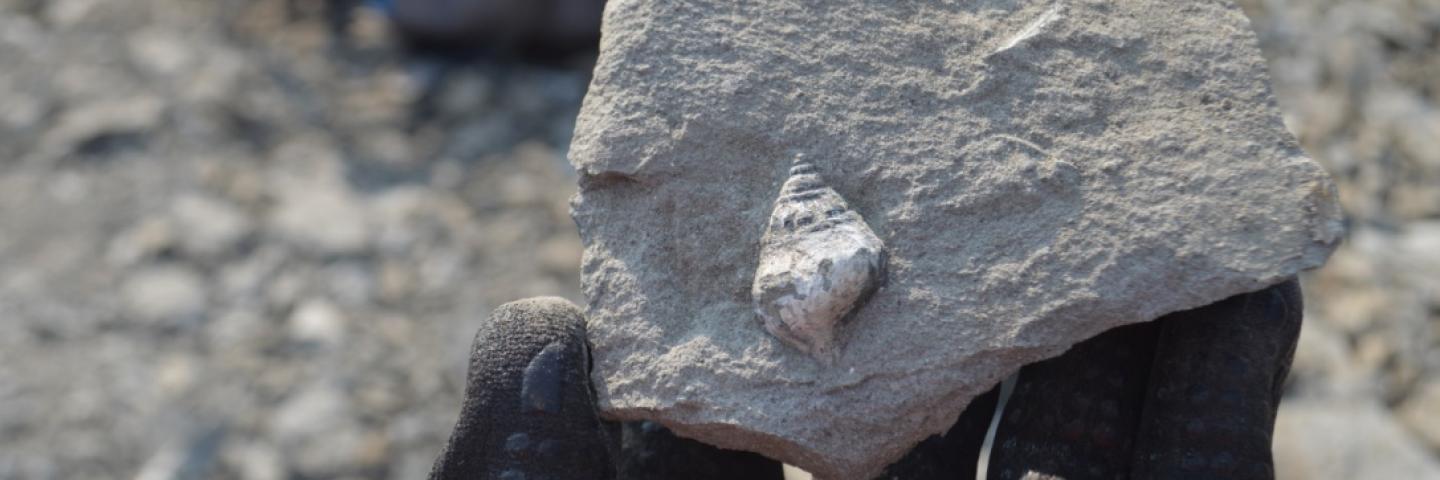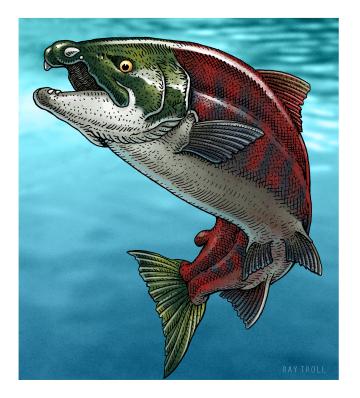 | SPIKE-TOOTHED SALMON Condon Fossil Collection director Edward Davis co-authored a study published in PLOS indicating the giant salmon Oncorhynchus rastrosus had a pair of teeth that protruded straight out of the side of its skull, rather than pointing downward, as scientists previously believed. Around the O published a look into the research behind the study as well as Ray Troll's famous salmonid art. |
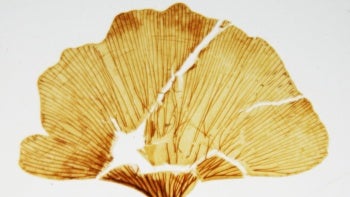 | GINKGO BILOBA, FLOODING, AND CLIMATE CHANGE
Condon Fossil Collection director emeritus Greg Retallack and Earth Sciences graduate student Giselle Conde are studying the relationship between atmospheric carbon dioxide and Ginkgo biloba trees in order to forecast what current and historic carbon trends could mean for the future. In March 2020, they published a study that examines the stomata (breathing pores) of modern and fossil Ginkgo biloba leaves to help reconstruct long-term changes in Earth’s atmospheric carbon levels. Ginkgo biloba is often the species of choice for paleoclimate studies because it has survived unchanged for at least 230 million years, providing an abundance of well-preserved fossil leaves that reveal changes in stomata density through time. In October 2020, they published an additional study comparing historical atmospheric carbon data against observations of Ginkgo biloba leaf stomata to quantify the relationship between rising carbon levels and increasingly catastrophic floods in the Mississippi River over a 260 year timespan. Retallack and Conde’s research demonstrates that, as atmospheric carbon levels rise due to the burning of fossil fuels, the ability of plants to absorb water from the air decreases, leading to more flooding in streams and rivers. |
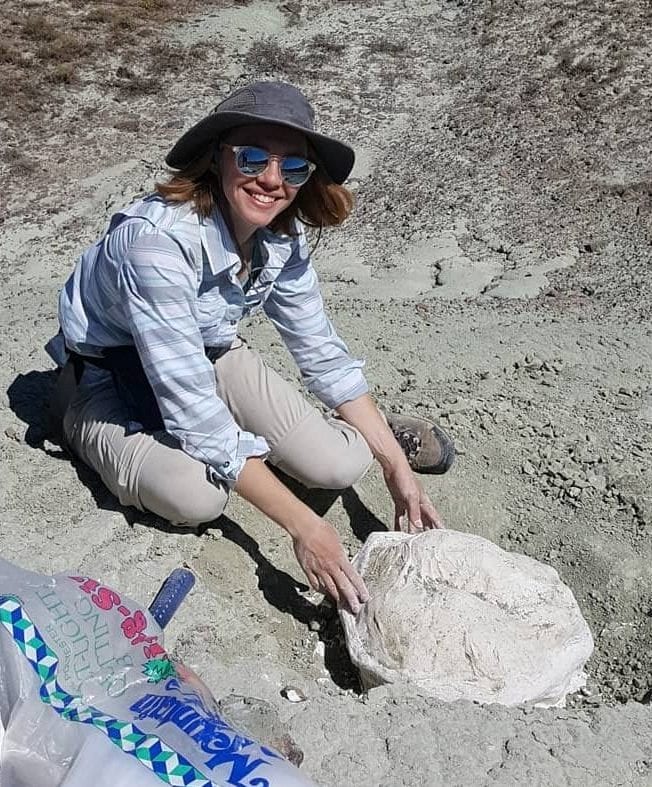 | OREGON OLIGO-MIOCENE HERBIVORE NICHE PARTITIONING AND COMMUNITY CHANGE
Niche partitioning is the process by which competing species use their environment differently in a way that helps them to coexist. To better understand how ungulates, or hooved mammals, responded to past climatic changes, PhD candidate Dana Reuter is investigating whether they partitioned plant-food resources (ate different diets) and how those ecological trends changed through time. Ungulates are key herbivores in terrestrial ecosystems and today many are threatened with extinction. Understanding how ecosystem change affected ungulates in the deep past will increase our ability to help species survive an thrive today. To see if certain species preferred particular environments, Reuter is analyzing the stable carbon and oxygen isotope composition of fossil tooth enamel from ungulates found in three Oregon geological formations. New local isotopic data collected for this study will be a powerful tool for reconstructing Oregon’s herbivore community structure over the past 20 million years. |
 | EARLIEST LAND PLANTS
A new UO study confirms what earth scientists have long suspected: Plants first appeared on land about 460 million years ago, in the middle of the Ordovician geologic period. Authored by geologist and Condon Fossil Collection director Greg Retallack, the study describes a series of plant impressions in an Ordovician rock deposit in Tennessee. The study, which focuses on mosses, lichens, and liverworts, is the first to identify whole fossil plants in the Tennessee deposit, and it offers a key support to Ordovician land plant theories. Further, if land plants emerged in this area 460 million years ago, they may have contributed to a decrease in carbon dioxide, leading to global cooling and eventually ushering in an ice age about 445 million years ago. Among the plant fossils found in the deposit was a newly identified moss species, which Retallack named Dollyphyton boucotii after the legendary singer Dolly Parton, whose Dollywood theme park is located a few miles away from the rock deposit. |
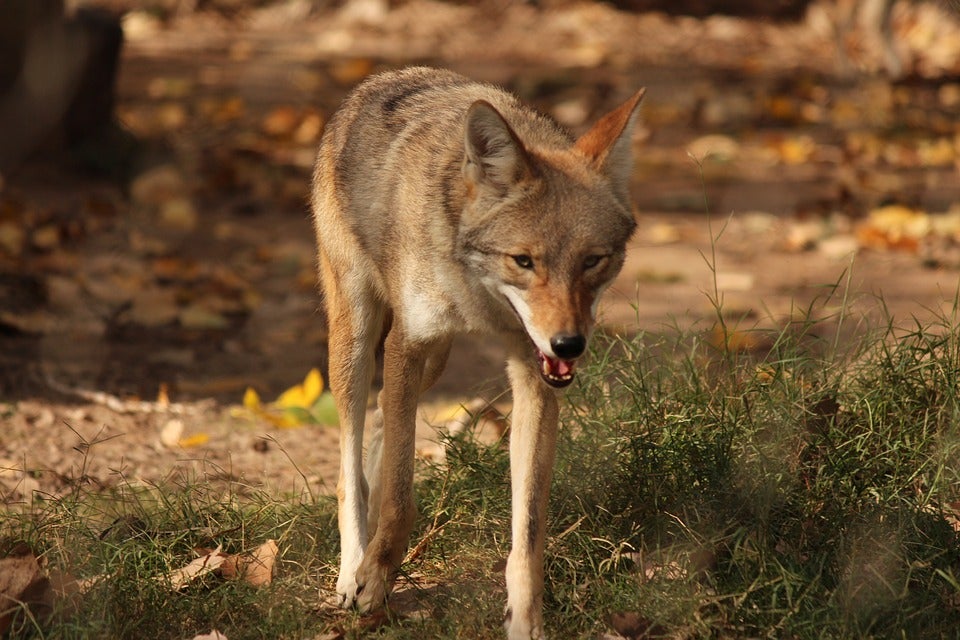 | CARNIVORAN INTRASPECIFIC TOOTH-SIZE VARIATION
PhD candidate Dana Reuter, along with museum paleontologists Samantha Hopkins and Edward Davis, recently assessed variation in tooth size among 19 species of carnivores, including pumas, coyotes, and bears. They evaluated whether developmental controls or functional demands influence carnivoran tooth-size variation. Developmental controls are the limits placed on organisms and evolution by what they inherit from their ancestors, while functional demands are the selective pressures placed on an organism by the physics of their behaviors and environment. The study identifies a set of interrelated factors that determine tooth shape, providing important insights for future studies of the mammalian fossil record. |
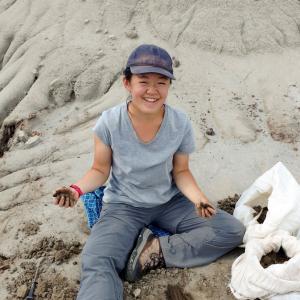 | CHANGING LANDSCAPES AND MAMMALIAN EVOLUTION
A great number of extinct mammals are known from the sediments of Oregon and are thought to have evolved in response to factors like climate and landscape change—factors that had an effect on biodiversity throughout Oregon’s deep past. PhD candidate Amanda Peng is investigating landscape change, climate, and mammalian evolution in past and present day in Oregon and across North America to better understand these relationships. |
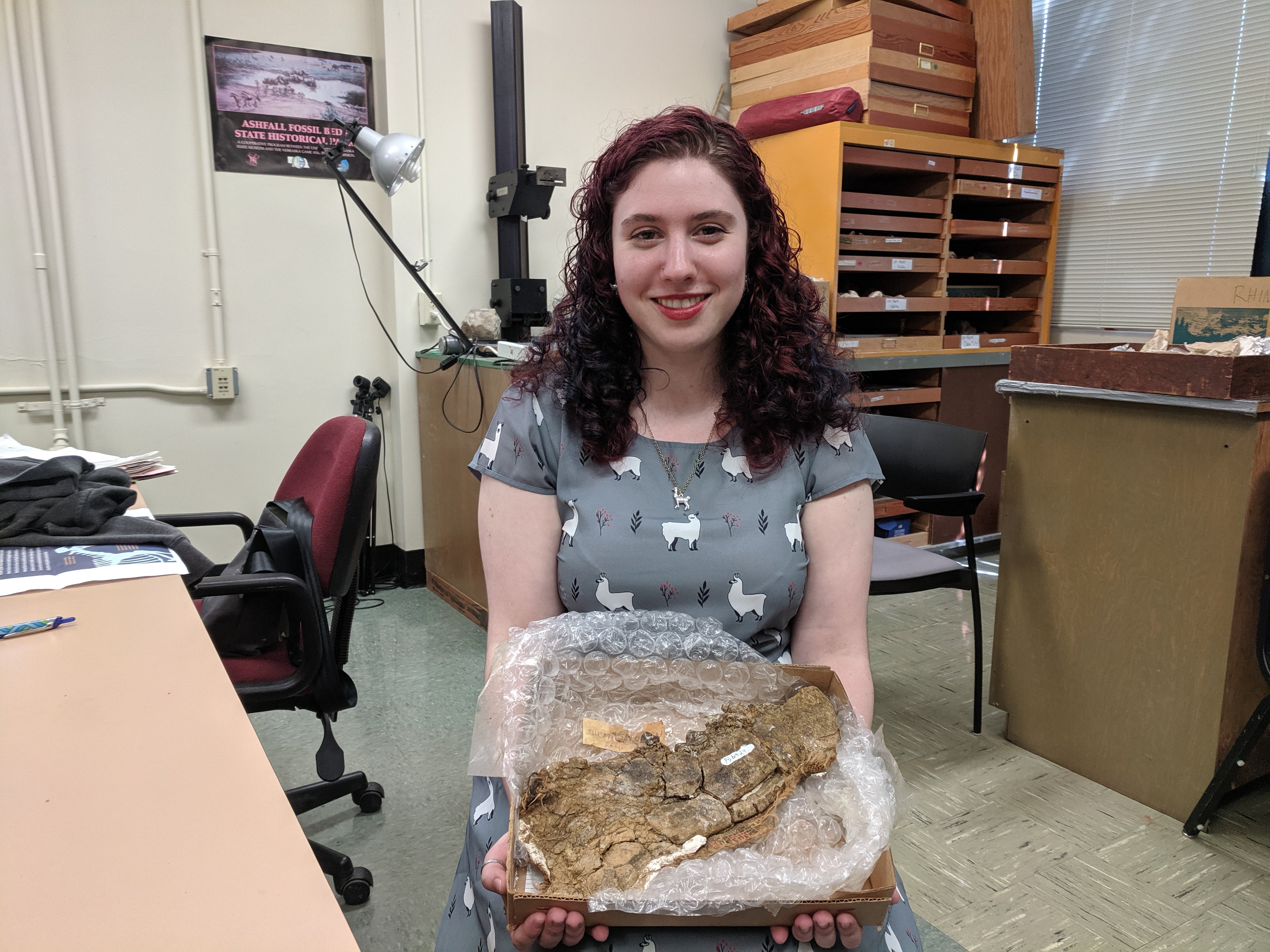 | DISCOVERY OF OREGON'S MURDER-COW
A long-misidentified fossil in the museum’s Condon Collection turns out to belong to a large carnivore never before documented in the Pacific Northwest. The focus of a recent study by paleontologists Selina Robson and Nick Famoso, both former UO students, and the museum’s own Samantha Hopkins and Edward Davis, the 40 million-year-old jaw bone was originally uncovered at the Hancock Quarry in the John Day Fossil Beds over 50 years ago. During her senior year at UO, Robson found the heavily damaged fossil in the Condon Collection, where it was labeled as a Hemipsaladon. But Robson wasn’t convinced; the fossil didn’t resemble the Hemipsaladon specimens she’d previously studied. The team turned to computerized tomography (CT) scanning to help solve the mystery. The 3D digital reconstruction revealed new details about the mammal’s jaw and teeth—details that identified the animal as Harpagolestes uintensis, an ancient creature with the skull of an ungulate (think pigs and cows) and the teeth of a bone-crushing carnivore. Newly dubbed the “hyena-pig” or “murder-cow,” the fossil took center stage in a recent paper coauthored by Robson and the team, going on record as Oregon’s first documented mesonychid and only the third carnivorous mammal known from the Hancock Quarry. Learn more about the find in Around the O or on OPB, and read Robson’s paper on the discovery. You can also see the fossil for yourself in the museum’s current lobby display. |
 | OREGON 2100: PROJECTED CLIMATIC AND ECOLOGICAL CHANGES
Greenhouse climatic warming is underway and exacerbated by human activities. Future outcomes of these processes can be projected using computer models checked against climatic changes during comparable past atmospheric compositions. A recent study coauthored by Greg Retallack, Edward Davis, Jon Erlandson, and colleagues gives concise quantitative predictions for future climate, landscapes, soils, vegetation, and marine and terrestrial animals of Oregon. Fossil fuel burning and other human activities by the year 2100 are projected to yield atmospheric CO2 levels of about 600-850 ppm. Such a greenhouse climate was last recorded in Oregon during the middle Miocene, some 16 million years ago. Oregon’s future may be guided by fossil records of the middle Miocene, as well as ongoing studies on the environmental tolerances of Oregon plants and animals, and experiments on the biological effects of global warming. See the full report. |
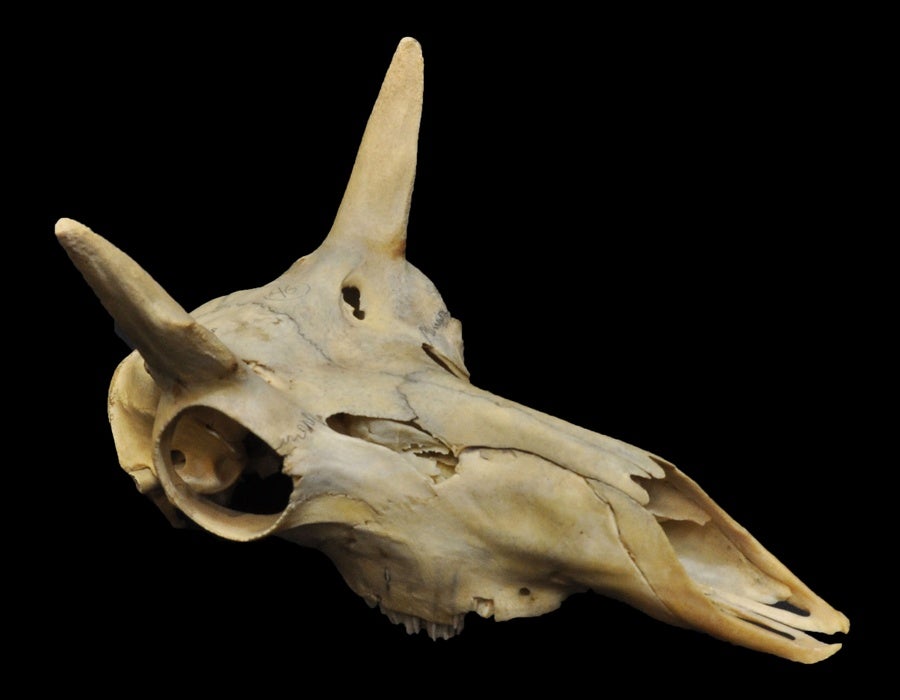 | EVOLUTION OF HEADGEAR IN RUMINANTS
Museum paleobiologist Edward Davis, working with Andrew Lee of Ohio University and Katie Brakora of the University of California at Berkeley, is investigating the origin and evolution of headgear (horns, antlers, pronghorns) in ruminant artiodactyls. Until recently, the evidence suggested that horns on bovids (cows, sheep, goats, and African antelope), antlers on cervids (deer, moose, and elk), ossicones on giraffids (giraffe and okapi), and pronghorns on Antilocapra americana (the pronghorn antelope) all evolved independently. Our research has generated new insights about the family trees of these animals and the way they grow their horns and antlers, and suggest that this was not the case. You can read the paper online at Proceedings B. |
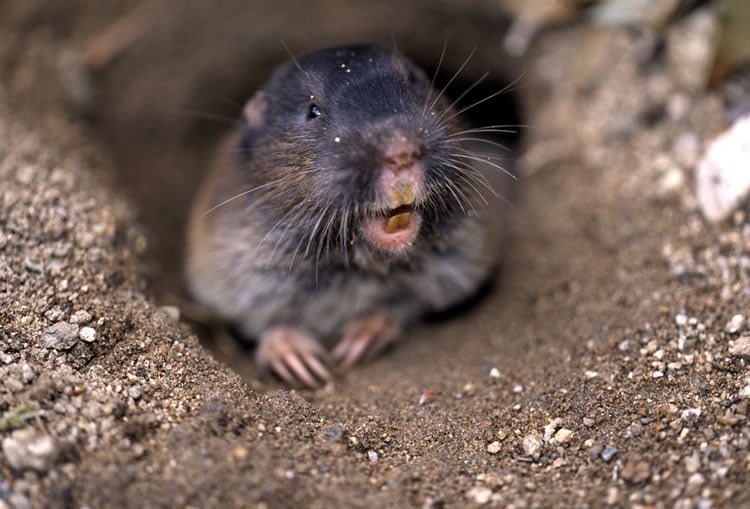 | EVOLUTION OF DIGGING IN SMALL MAMMALS
Samantha Hopkins, Curator of Paleontology at the museum and assistant professor in the the University of Oregon's Clark Honors College, is studying the evolution of digging behavior in small mammals such as gophers and moles. Measurements taken from fossil and living skeletons shed light on the levers in arms, legs, and heads that animals use to make their burrows. By comparing incompletely preserved skeletons of fossil animals to the complete skeletons of living animals, we are gaining new insights into the evolution of these levers. |
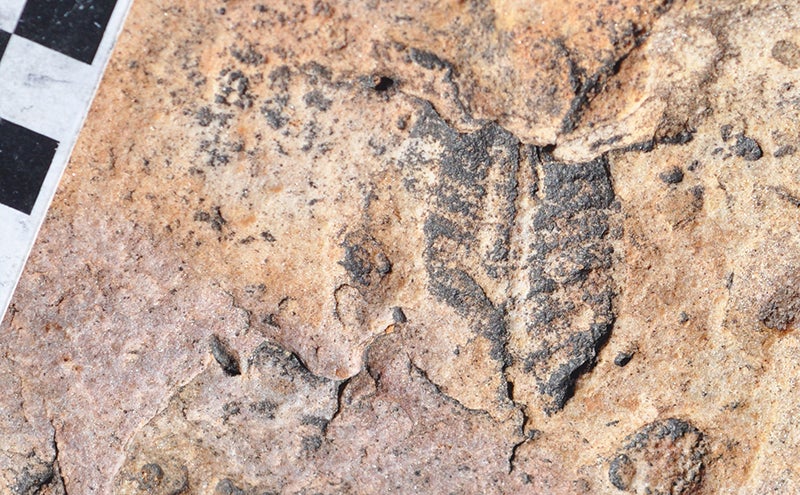 | EVOLUTION OF CAMBRIAN AND PRECAMBRIAN SOILS
Geologist and Condon Collection director Greg Retallack has been looking at soil formation in very ancient rocks—rocks older than mammals, trees, and land plants—in Cambrian and Precambrian sedimentary sequences of the Flinders Ranges in South Australia. Fossil soils are surprisingly well preserved and diverse in these 540 million-year-old rocks of river floodplains. Some of these fossil soils, or paleosols, reveal evidence for life on land, including certain classical Ediacaran fossils that have been traditionally regarded as marine organisms. Learn more about Retallack's research. |
 | PATTERNS AND PROCESSES OF EXTINCTION Museum paleobiologist Edward Davis is conducting research related to the patterns and processes of mammalian extinction, primarily aimed at understanding the relationship between climate change and human impacts on the Pleistocene megafaunal extinctions that occurred about 13,000 years ago in North America. Davis, in collaboration with UO alumnae Meaghan Emery-Weatherell and Brianna McHorse, recently published a paper in Paleobiology that mapped the spread of the extinction across North America. That work revealed no clear correlation between human arrival and the major extinction event, suggesting that any influence humans had on the event was a more subtle restructuring of energy flows in ecosystems and not simply overhunting of large mammals like horses and mammoths. |
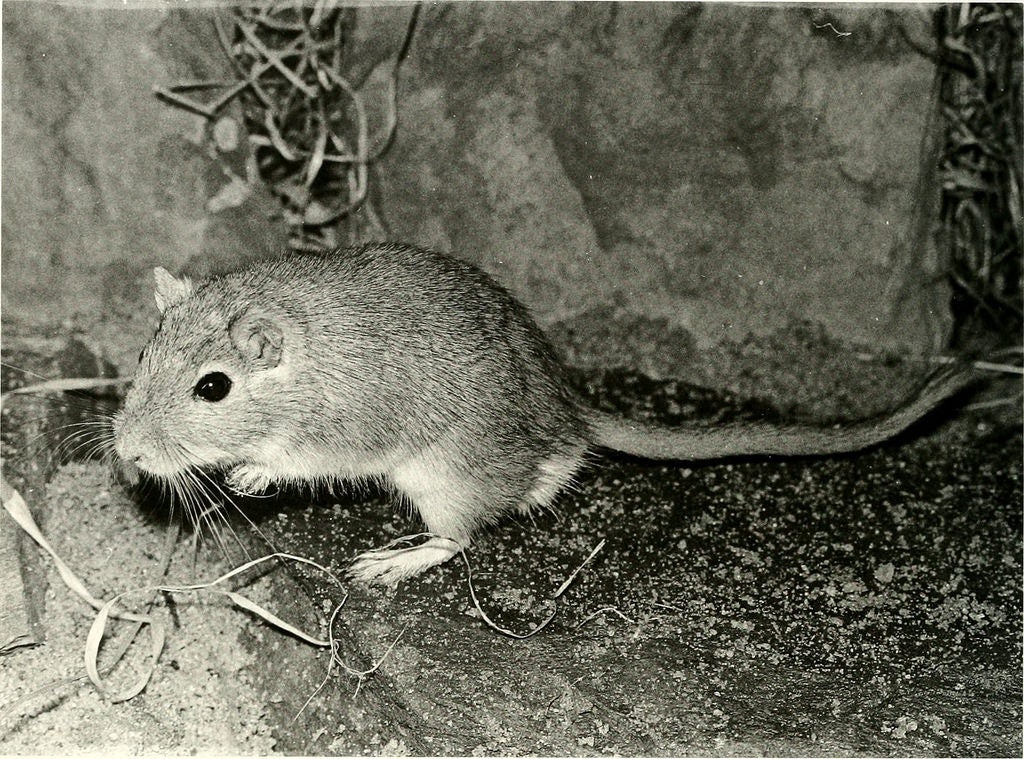 | MIOCENE RODENTS OF OREGON
Megan Wyatt is working on an undergraduate honors thesis with Samantha Hopkins using rodent teeth to date stratigraphy and as ecological indicators for the Mascall formation in Cave Basin (early Miocene). She is also using geometric morphometric analysis of extant Heteromyidae (pocket mice) teeth and skulls to find morphological distinctions between genera that could be applied to the fossil record. |
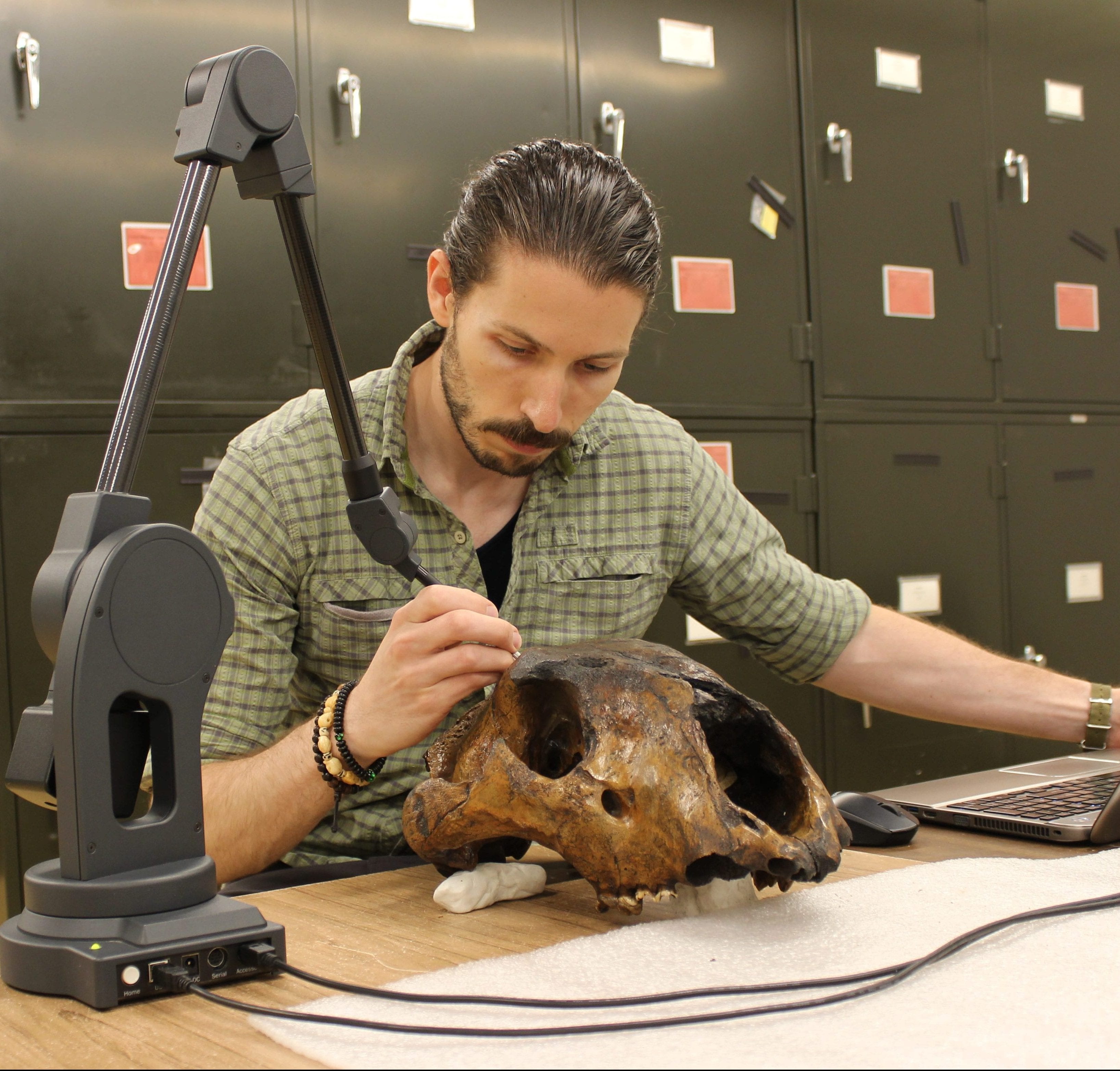 | EVOLUTION OF THE CATS AND THEIR RELATIVES Paul Barrett is investigating aspects of the evolution of feliforms, a diverse group of living and extinct carnivore families that includes (among others) cats, hyenas, civets, mongooses, and nimravids. Much is already known about the relationships of still living groups through genetic analyses, but surprisingly little about the relationships of the many and varied extinct forms. Paul is working with Bayesian total-evidence techniques to combine genetic and fossil evidence to understand the evolutionary relationships of both living species and those only known from the fossil record. Cat-like carnivores have long been cited to somehow be lacking in evolutionary potential, especially when compared to their dog-like cousins, which have explored aquatic to terrestrial habitats and evolved many and varied morphologies. By comparison, feliform carnivores have been said to be relatively static in their evolutionary history: They are all very cat-like. To assess the perceived limitations of the cat-like carnivores, Paul is employing analysis of three-dimensional landmarks on their skulls. By seeing how correlated the interactions are between bones of the skull and comparing that to the morphological diversity of skull size and shape feliforms explore, we can assess if these correlations have negatively stymied or fruitfully channeled feliform evolutionary potential. Finally, most carnivores have a pair of shearing blade-like teeth (carnassials) at the back of their toothrow which are typically used to slice meat. Some hyper-carnivorous groups experience extreme amounts of wear upon these teeth, likely indicative of their ecological niche. For a subgroup of these forms (specifically sabretooth taxa) it has been noted that the teeth appear to rotate with an individual’s age, and thus exhibit an auto-sharpening mechanism. Exactly how this rotation is accomplished and the extent it is present across cat-like carnivores has only been superficially explored. Paul is using three-dimensional morphometrics to analyze the rotation and tooth wear process for these extreme carnivores and compare it to what is seen in their more “normal” relatives. |
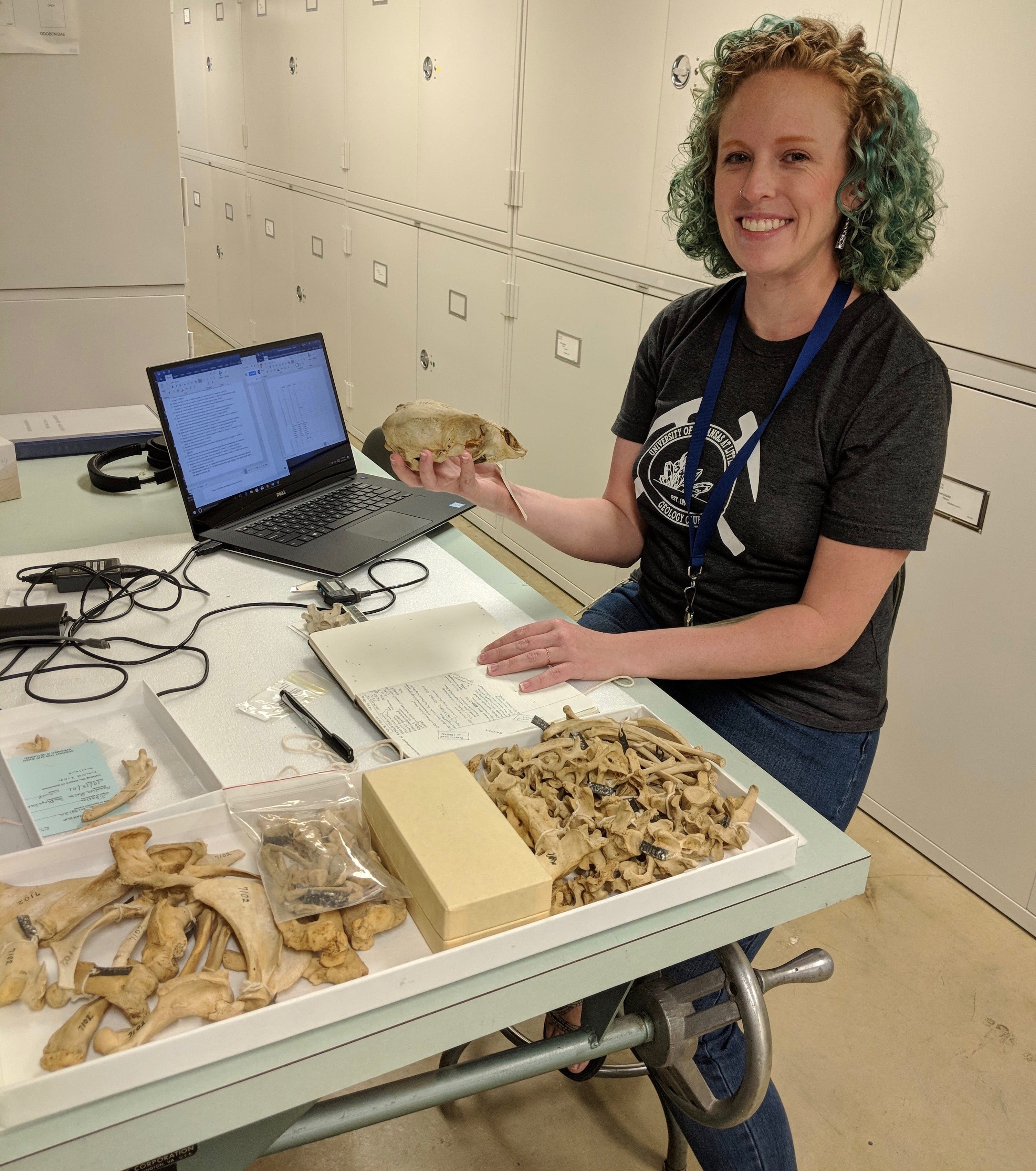 | EVOLUTION OF PINNIPEDS
Pinnipeds (true seals, eared seals, and walruses) first appeared on the Northwest coast of North America over 25 million years ago. Since then, this lineage has spread to inhabit coastal ecosystems across the globe. PhD candidate Kellum Tate-Jones is addressing outstanding questions about the relationships of fossil pinnipeds to one another, the evolution of their locomotor ecology, and the effects of both modern and deep time climate change on their biogeographical distribution. In 2020, Tate-Jones published a description of a new fossil pinniped, Eodesmus condoni, from the Oregon coast, along with coauthors Carlos Peredo, Christopher Marshall, and museum paleontologist Samantha Hopkins. Eodesmus condoni is the latest described species from the extinct pinniped family Desmatophocidae, first identified by University of Oregon professor and paleontologist Thomas Condon. |















